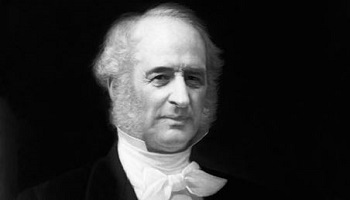
Phil Knight’s Net Worth The Legacy and Wealth of Nike’s Co-Founder
Phil Knight, co-founder of Nike Inc., transformed a small sneaker company into one of the world’s most recognizable brands. With an estimated net worth of over $40 billion as of 2024, Knight’s financial success is a story of entrepreneurship, innovation, and perseverance. His influence extends beyond business, touching areas like sports, education, and philanthropy. This article will delve into how Phil Knight amassed his wealth, his role in Nike’s success, and how he has used his fortune to make a lasting impact.
Early Life and Passion for Sports
Phil Knight was born on February 24, 1938, in Portland, Oregon. He developed a love for sports early in life and excelled as a middle-distance runner. This athletic background laid the foundation for his future in the sports industry. Knight attended the University of Oregon, where he ran track under the guidance of coach Bill Bowerman. Bowerman would later become a pivotal figure in Knight’s life and career, helping to ignite Knight’s interest in high-performance athletic footwear.
After earning his degree, Knight enrolled at Stanford Graduate School of Business, where he wrote a paper that inspired the concept of importing Japanese running shoes to compete with the German brands that dominated the U.S. market. This paper, which laid out a vision for a shoe company focused on quality and performance, would become the blueprint for Nike.
The Birth of Blue Ribbon Sports
In 1964, Phil Knight and Bill Bowerman co-founded Blue Ribbon Sports, a company initially focused on importing and selling Japanese-made Onitsuka Tiger (now ASICS) running shoes. Knight’s initial investment of $500, along with Bowerman’s expertise in athletic footwear design, laid the groundwork for what would later become Nike. Blue Ribbon Sports began selling shoes out of the trunk of Knight’s car, but their commitment to quality and performance quickly gained them a loyal customer base.
In 1971, as their partnership with Onitsuka Tiger dissolved, Knight and Bowerman rebranded their company as Nike Inc., a name inspired by the Greek goddess of victory. Knight hired a graphic design student, Carolyn Davidson, to create the now-iconic Swoosh logo, which Knight initially paid only $35 for. This minimal investment would later become one of the most recognizable logos in the world, symbolizing speed, power, and innovation.
Building the Nike Empire
Under Knight’s leadership, Nike grew rapidly, leveraging bold marketing strategies, celebrity endorsements, and innovative product designs. The company’s breakthrough moment came in 1984 when Knight signed basketball legend Michael Jordan to an endorsement deal. The Air Jordan sneaker line, launched that year, became a cultural phenomenon and a driving force behind Nike’s success.
Key factors that contributed to Nike’s growth and Knight’s personal wealth include:
Strategic Endorsements: Beyond Michael Jordan, Nike signed athletes such as Tiger Woods, LeBron James, and Serena Williams, positioning the brand as a leader in multiple sports.
Product Innovation: Nike’s commitment to technological advancements, such as the Air Max cushioning system and Flyknit technology, set the brand apart from competitors and attracted a global customer base.
Global Expansion: Knight spearheaded Nike’s expansion into international markets, making it a dominant force in Europe, Asia, and South America, and turning it into a global brand.
Effective Marketing: Nike’s “Just Do It” campaign, launched in 1988, resonated with athletes and non-athletes alike, further solidifying the brand’s cultural impact.
As Nike grew, so did Knight’s wealth. His shares in the company, bolstered by consistent growth in sales and market capitalization, made him one of the richest people in the world. In 1980, Nike went public, which greatly increased Knight’s net worth, and by the 1990s, Nike had become a household name.
Phil Knight’s Role in Nike’s Success
As CEO, Knight was known for his unconventional approach to business. He believed in taking risks, embracing change, and trusting the creativity of his team. His leadership style fostered an environment of innovation that allowed Nike to continually push boundaries and remain relevant in a competitive market. Knight was also deeply involved in Nike’s operations, from overseeing product development to crafting the brand’s marketing campaigns.
In 2004, Knight stepped down as CEO, though he remained actively involved in the company as chairman. His son, Travis Knight, later joined Nike’s board, continuing the family’s involvement in the company’s leadership. Despite stepping back from day-to-day operations, Knight’s influence on Nike’s strategic direction remained strong.
Phil Knight’s Net Worth and Investments
Phil Knight’s net worth, estimated at over $40 billion, primarily comes from his stake in Nike. As one of the largest shareholders, Knight benefits from the company’s continued success, with Nike’s stock consistently performing well over the years. However, Knight has also diversified his wealth through other investments, including:
Real Estate: Knight owns several properties, including homes in Oregon and California. His real estate investments add to his overall net worth and showcase his affinity for luxury living.
Investment in Animation: Knight’s son, Travis Knight, founded Laika Studios, an animation studio known for films like Coraline and Kubo and the Two Strings. Phil Knight has supported Laika financially, investing in the company and contributing to its growth in the animation industry.
Financial Investments: Knight has invested in various ventures and companies outside of Nike, further diversifying his wealth.
Philanthropy and Giving Back
Despite his immense wealth, Knight is known for his philanthropy and commitment to education, healthcare, and sports. He has donated billions of dollars to various causes, including:
University of Oregon: As an alumnus, Knight has contributed over $1 billion to the University of Oregon, funding academic programs, athletic facilities, and research initiatives. His donations have helped elevate the university’s reputation and attract top talent.
Stanford University: Knight also donated $400 million to Stanford Graduate School of Business, where he studied. This donation established the Knight-Hennessy Scholars program, which provides graduate scholarships to students with a commitment to public service.
Healthcare and Cancer Research: In 2016, Knight pledged $500 million to Oregon Health & Science University for cancer research. His generous donation aimed to accelerate the development of cancer treatments and make a meaningful impact in the medical field.
Knight’s philanthropy reflects his belief in the power of education and innovation to drive positive change. Through his donations, he has left a legacy that extends far beyond his business achievements.
Knight’s Legacy and Influence
Phil Knight’s legacy is built not only on his financial success but also on the values he instilled in Nike. His story is a testament to the power of perseverance, risk-taking, and believing in one’s vision. As a pioneer in sportswear, Knight transformed Nike into a cultural icon, shaping the industry’s future and influencing generations of entrepreneurs.
Knight’s autobiography, Shoe Dog, provides a candid look at his journey, offering insights into the challenges he faced and the decisions that shaped Nike’s success. His story inspires aspiring entrepreneurs, highlighting the importance of resilience and adaptability in the face of adversity.
Phil Knight’s Estimated Net Worth Breakdown
To understand how Phil Knight’s wealth is structured, here’s a breakdown of his net worth components:
Nike Shares: Knight’s largest asset is his ownership stake in Nike, valued at billions of dollars. His shares in the company continue to appreciate as Nike grows.
Real Estate: Knight owns multiple properties, with his real estate portfolio estimated to be worth hundreds of millions.
Investments in Laika Studios: His financial support for Laika Studios demonstrates his commitment to creativity and the arts.
Other Financial Investments: Knight has likely invested in stocks, bonds, and other financial assets, though specific details are private.
Conclusion
Phil Knight’s net worth is a testament to his impact on business, sports, and culture. From his humble beginnings as a runner and aspiring entrepreneur, he built Nike into a global powerhouse that continues to dominate the industry. Through his wealth and influence, Knight has made substantial contributions to society, whether through philanthropy, investment in the arts, or inspiring future entrepreneurs.
Knight’s journey is a powerful reminder that success is not just about wealth but about creating something meaningful and giving back. His story will continue to inspire future generations, proving that with vision, dedication, and resilience, anyone can build their own legacy.



